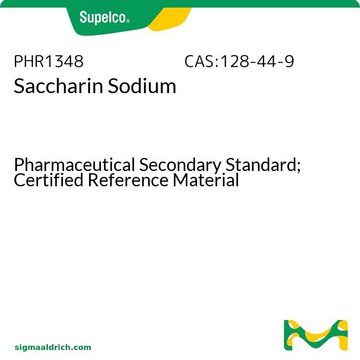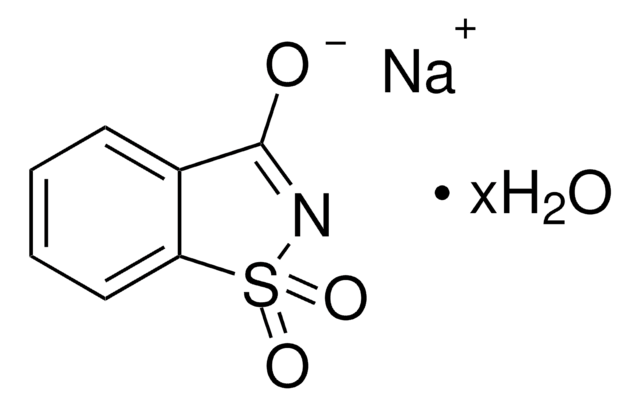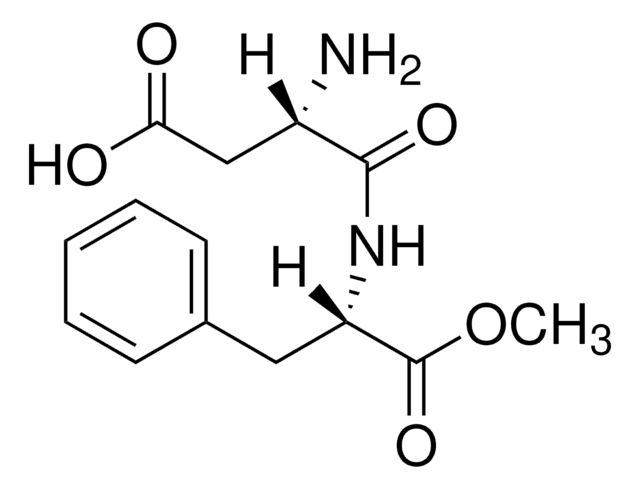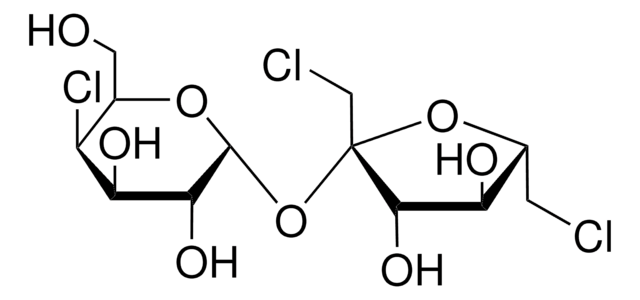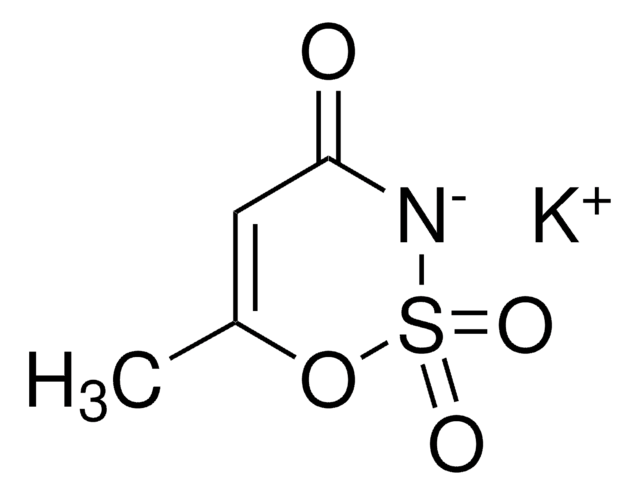1607007
USP
Saccharin
United States Pharmacopeia (USP) Reference Standard
동의어(들):
2,3-Dihydroxy-1,2-benzisothiazol-3-one-1,1-dioxide, 2-Sulfobenzoic acid imide, o-Benzoic sulfimide
로그인조직 및 계약 가격 보기
모든 사진(1)
About This Item
실험식(Hill 표기법):
C7H5NO3S
CAS Number:
Molecular Weight:
183.18
Beilstein:
6888
MDL number:
UNSPSC 코드:
41116107
PubChem Substance ID:
NACRES:
NA.24
추천 제품
Grade
pharmaceutical primary standard
API family
saccharin
제조업체/상표
USP
mp
226-229 °C (lit.)
응용 분야
pharmaceutical (small molecule)
형식
neat
SMILES string
O=C1NS(=O)(=O)c2ccccc12
InChI
1S/C7H5NO3S/c9-7-5-3-1-2-4-6(5)12(10,11)8-7/h1-4H,(H,8,9)
InChI key
CVHZOJJKTDOEJC-UHFFFAOYSA-N
유사한 제품을 찾으십니까? 방문 제품 비교 안내
일반 설명
This product is provided as delivered and specified by the issuing Pharmacopoeia. All information provided in support of this product, including SDS and any product information leaflets have been developed and issued under the Authority of the issuing Pharmacopoeia.For further information and support please go to the website of the issuing Pharmacopoeia.
애플리케이션
Saccharin USP reference standard, intended for use in specified quality tests and assays as specified in the USP compendia. Also, for use with USP monographs such as:
- Saccharin Sodium Tablets
생화학적/생리학적 작용
A sweet tastant for mammals. A glycerol taste receptor binding site specific for glucose has been proposed in drosophila.
분석 메모
These products are for test and assay use only. They are not meant for administration to humans or animals and cannot be used to diagnose, treat, or cure diseases of any kind.
기타 정보
Sales restrictions may apply.
관련 제품
제품 번호
설명
가격
Storage Class Code
11 - Combustible Solids
WGK
WGK 2
Flash Point (°F)
Not applicable
Flash Point (°C)
Not applicable
가장 최신 버전 중 하나를 선택하세요:
이미 열람한 고객
The toxicological effects of saccharin in short-term genotoxicity assays.
D L Arnold et al.
Mutation research, 221(2), 69-132 (1989-09-01)
M D Reuber
Environmental health perspectives, 25, 173-200 (1978-08-01)
Saccharin is carcinogenic for the urinary bladder in rats and mice, and most likely is carcinogenic in human beings. The neoplasms of the urinary bladder are malignant and invade and metastasize. Male rats are more susceptible to urinary bladder carcinogenesis
J Whysner et al.
Pharmacology & therapeutics, 71(1-2), 225-252 (1996-01-01)
Sodium saccharin (NaSac) produces bladder tumors consistently in male rats only after lifetime exposure that begins at birth. NaSac is not metabolized and is negative in most genotoxicity tests. NaSac-induced cell damage and proliferation have been proposed as important factors
Marilyn E Carroll et al.
Behavioural pharmacology, 19(5-6), 435-460 (2008-08-12)
A positive relationship between the consumption of sweetened dietary substances (e.g. saccharin and sucrose) and drug abuse has been reported in both the human and other animal literature. The proposed genetic contribution to this relationship has been based on evidence
L B Ellwein et al.
Critical reviews in toxicology, 20(5), 311-326 (1990-01-01)
Almost from its discovery in 1879, the use of saccharin as an artificial, non-nutritive sweetener has been the center of several controversies regarding potential toxic effects, most recently focusing on the urinary bladder carcinogenicity of sodium saccharin in rats when
자사의 과학자팀은 생명 과학, 재료 과학, 화학 합성, 크로마토그래피, 분석 및 기타 많은 영역을 포함한 모든 과학 분야에 경험이 있습니다..
고객지원팀으로 연락바랍니다.